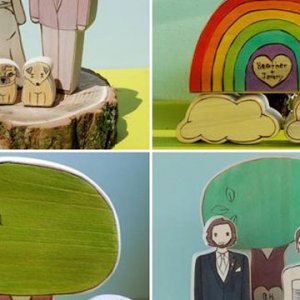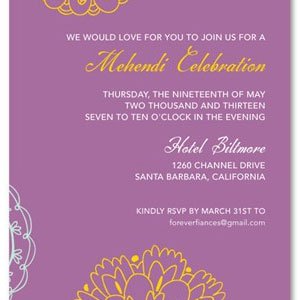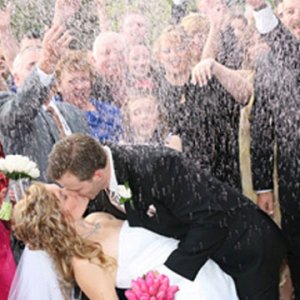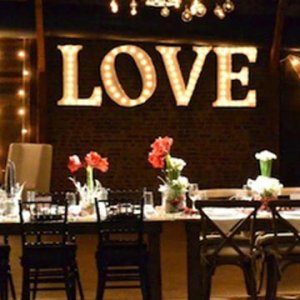 Guest blogger: Kate Harrison, creator of greenbrideguide.com.
Guest blogger: Kate Harrison, creator of greenbrideguide.com.
After planning her own green wedding in 2007, Kate wrote the best-selling green wedding book, The Green Bride Guide: How to Plan an Earth-Friendly Wedding on Any Budget (Sourcebooks, 2008). In 2009, she founded greenbrideguide.com to help couples use their weddings to promote social and environmental change while supporting the local green economy. Kate has a JD in Environmental Law and a Master's from Yale in Environmental Policy.
From the bridal bouquet to the floral arrangements, the average couple spends $2,000 on flowers. "What could be more naturally beautiful or green than a floral arrangement?" you might ask. Well, unfortunately, there are lots of problems with conventionally grown flowers.
First, there are the environmental concerns. About 60 percent of the flowers available in the United States are imported, and because flowers are not eaten, the government does not regulate the levels of pesticide residue on imported blooms. With each watering, pesticide residues are washed into rivers and streams, polluting the aquatic habitat and contaminating drinking-water supplies, both in the country where they are grown and again here, when florists rinse the flowers before arranging them.

Autumn Floral Arrangement, A Beautiful Mess
In addition to environmental degradation, conventional flower production threatens the health of flower-farm workers. According to the New York Times, 60 percent of flower-farm workers — the majority of whom are women in South America — suffer adverse health effects from their jobs, including headaches, nausea, blurred vision, and higher rates of miscarriage. This is not surprising when you learn that flowers are the most pesticide-intensive crop in the world. Clearly, a rose is not always a rose.
If you want to try your hand at growing your own wedding flowers, you can cut out the middle man and keep your flowers chemical free. Take advantage of the season and grow gorgeous flowers in your yard or window planter without using energy-sucking greenhouses.
Wildflowers
If you want wildflowers in your wedding, know what you’re getting yourself into first. It’s more eco-friendly to grow your own wildflowers than to pick them in the wild. Wildflower populations are very delicate. Unlike cultivated plants, wildflowers must compete with grasses, trees, and other species for sun, water, and soil nutrients. Although nothing seems greener than walking into a field of wildflowers and harvesting them the day before your wedding, you can actually do quite a bit of damage by disrupting their established niches and seeding patterns.

Photo via Indulgy
Instead, plant some regional species from seed yourself, or harvest them on your own. (No yard? Borrow a friend’s!). To find out which seed mix is appropriate for your geographic region, check out American Meadows. If you decide to send plantable wildflower invitations, make sure the flower species is native to the area!
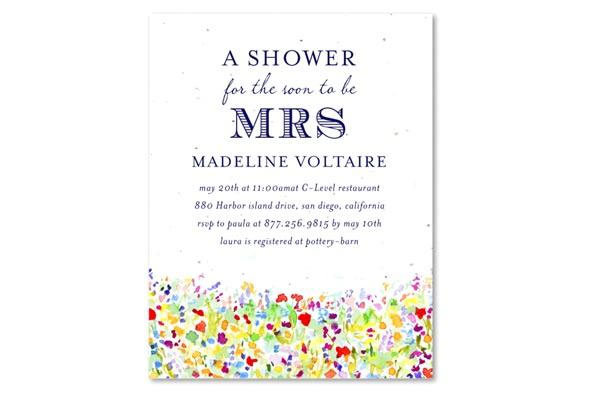
Wildflower Bridal Shower Invitations, Forever Fiances'
Forcing Bulbs
If you are having a winter wedding but you want the vibrant color that spring and summer flowers provide, try this technique. In addition to growing your own flowers from seed in your garden, you can grow flowers "off season" by forcing bulbs with a little pre-planning. Forcing is really a way of tricking a bulb into thinking that it is spring. The easiest way to do this is to buy bulbs in the fall and plant them according to the package directions directly into the pots you want to use.
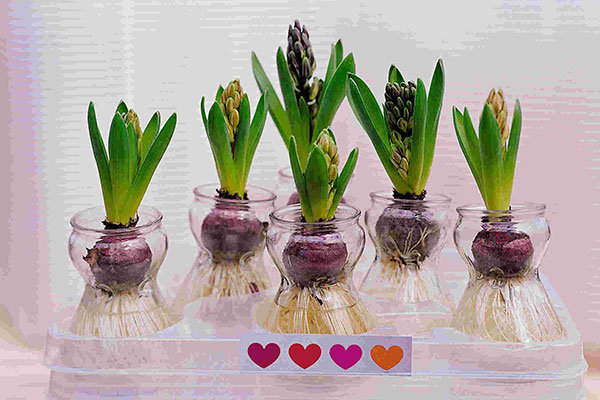
Photo Credit: Forced Bulbs, Pearls Events
Water them and stick them somewhere cold — ideally between 35 and 45 degrees — for eight to twelve weeks. A cool cellar, an outdoor shed or garage, or an unheated pantry usually does the trick. Most bulbs can also be stored in paper bags in a freezer. Move the pots to well-lit windowsills about four weeks before the big day. Keep the soil moist until the bulbs produce beautiful flowers.
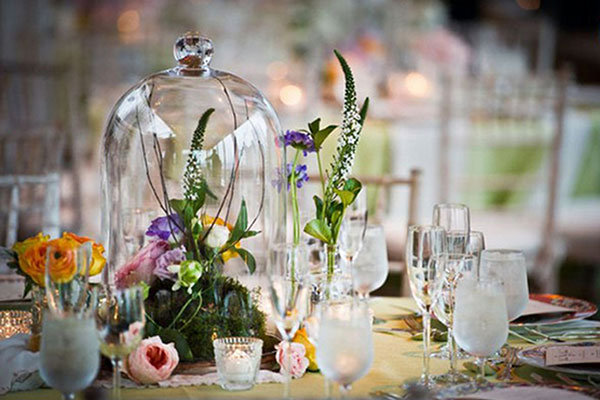
Photo Credit: TxWeddings
With this technique you can have beautiful homegrown spring flowers — narcissus, lilies, miniature iris, tulips, and daffodils — at a winter wedding. It is worth noting that some bulbs do not need to be cooled and can therefore be grown more quickly. If you want to give forcing a try but are worried about the timing or results, you can always have an order with the florist "on hold" as a backup plan.
Keeping Blooms Fresh
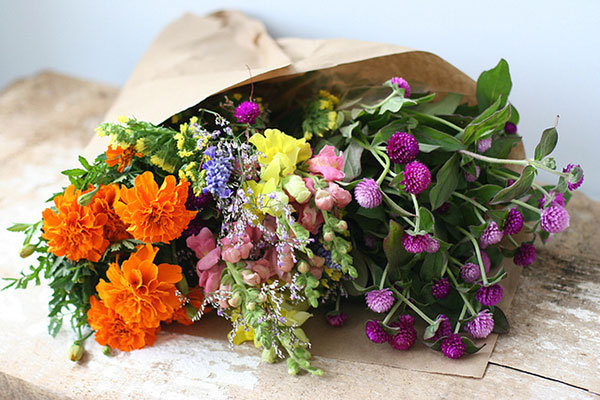
Photo Credit: thenaturalweddingcompany.co.uk
If you want to include flowers from your garden, cut them the day before the wedding and place them in water in the fridge, covered loosely with a plastic bag. Be sure to take all the fruit out of the fridge first because fruit releases ethylene, a ripener that will make the flowers wilt. You can transport flowers to your wedding site in coolers with ice and water.
Find green gardening products in the Garden and Outdoor Section of our Gifts and Registry page.
—Kate Harrison
- Anonymous's blog
- Log in or register to post comments

